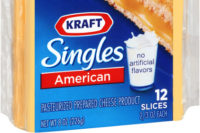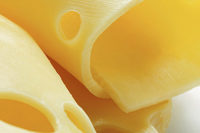It seems that hardly a week goes by without another food company announcing its commitment to sodium reduction, or another group proposing voluntary targets for food producers.
It seems that hardly a week goes by without another food company announcing its commitment to sodium reduction, or another group proposing voluntary targets for food producers. The debate on whether sodium was an issue or not ended last year with the Institute of Medicine’s report, “Strategies to Reduce Sodium Intake in the United States.”
The message was reinforced in the revised 2010 Dietary Guidelines for Americans with an increased focus on a recommended daily allowance of 2,300 milligrams sodium for most adults and a new, reduced daily allowance of 1,500 milligrams for a significant portion of the population such as children and at-risk adults.
However, this now raises two important questions. Firstly, what’s the route forward to achieving an overall 33% reduction in dietary sodium (from the current 3,436 milligrams daily average)? Secondly, in the quest to limit sodium consumption, how do we avoid creating shortfalls in other positive nutrients such as calcium and protein?
Protein, calcium and sodium
Consider this. Dairy products deliver approximately 11% of the sodium in the U.S. diet, with much of that (8%) coming from cheese. Even a simple glass of pure 2% milk contains 130 milligrams of sodium. So if you follow the three-servings-of-dairy-a-day rule, you’ll likely consume at least 390 milligrams of sodium, or 17% of your daily guidance. However, dairy products are also very important sources of calcium (21% of dietary calcium comes from cheese), protein and other valuable nutrients. Hitting 2,300 milligrams sodium a day (let alone 1,500 milligrams a day) by relying on reduced consumption and avoidance while avoiding any shortfalls is not going to work for most consumers.
Even minimally processed products such as cheddar cheese or cottage cheese have added salt as part of their traditional make process, which cannot be easily removed or reduced without sacrificing quality. Sodium plays a complex role in cheese and is more than just salt added for taste. In natural cheese, salt is vital for curd formation and curing. Even relatively small reductions in sodium change the environment for the micro-flora, which results in change to taste and texture that goes much further than simply being less salty. In process cheese, sodium salts play a critical role in delivering not just the flavor, but also the creamy melt characteristic.
It is possible to exchange some of the sodium salts with other salts, such as potassium. Yet this creates another set of challenges with unwanted taste changes in the form of increased bitterness. Reductions can be made, but even slight decreases of 10% are not always straightforward and can alienate loyal consumers.
Looking beyond reduction
Despite these challenges, Kraft Foods, Northfield, Ill., has been actively working on sodium reduction for more than two decades and in 2010, we announced further plans to reduce sodium across our U.S. portfolio by an average of 10% by 2012. That’s equivalent to 750 million teaspoons of salt. In cheese, for example, we reduced the sodium in Kraft Velveeta by 10% in 2010.
However, to reach the recommended consumption levels, we need to look beyond sodium reduction in existing products. The industry has three other parallel paths: 1) introduce reduced-sodium alternatives to existing products; 2) innovate with new products that offer great taste but are naturally low in sodium; and 3) invest in new technology to better manage how we use sodium in our products.
Within Kraft cheese, we are making progress on offering reduced-sodium versions of products. The challenge is the balance between a meaningful reduction in sodium while still delighting the consumer with taste. As part of this strategy, Kraft Foods now offers reduced sodium (30% lower) versions of both Breakstone’s and Knudsen cottage cheeses as well as other cheese varieties, such as Swiss, which are lower sodium.
Innovating with new products that are naturally low in sodium also needs to be part of the solution. It is also the hardest and riskiest strategy, which has to be rooted in a broader business rationale and not just lower sodium. One recent example from Kraft is the launch of Athenos Greek yogurt, which has only 100 milligrams of sodium and 0 grams fat per serving while still delivering great taste and texture with 23 grams of high-quality protein.
In March, the Dairy Innovation Center of Dairy Management Inc., Rosemont, Ill., published a paper on the sodium content of various retail cheeses in the United States. It is a unique and substantial piece of scientific work based on real marketplace data. One of the interesting findings was the relatively wide range in sodium content (as measured analytically) across cheeses. Even within one cheese type, such as cheddar, there was significant variation (470-730 milligrams per 100 grams) and even still within individual brands there was variation. Perhaps that should not be a surprise as cheese is made directly from milk, a natural material, which itself varies.
Many of our manufacturing processes are based on long-established traditional methods with the focus for a cheesemaker on amount of added salt rather than final sodium content, which is more difficult to measure. As an industry, improving our control of sodium has to go in parallel with any steps in reductions.
The sodium challenge is tough, and to tackle it we need to use all our options; it’s just not going to be business as usual.
Nigel Kirtley is vice president R&D at Kraft Foods Cheese and Dairy, Northfield, Ill.
Dairy Foods seeks essays from dairy processors. Contact carperj@dairyfoods.com.
Get our new eMagazine delivered to your inbox every month.
Stay in the know on the latest dairy industry trends.
SUBSCRIBE TODAYCopyright ©2024. All Rights Reserved BNP Media.
Design, CMS, Hosting & Web Development :: ePublishing


